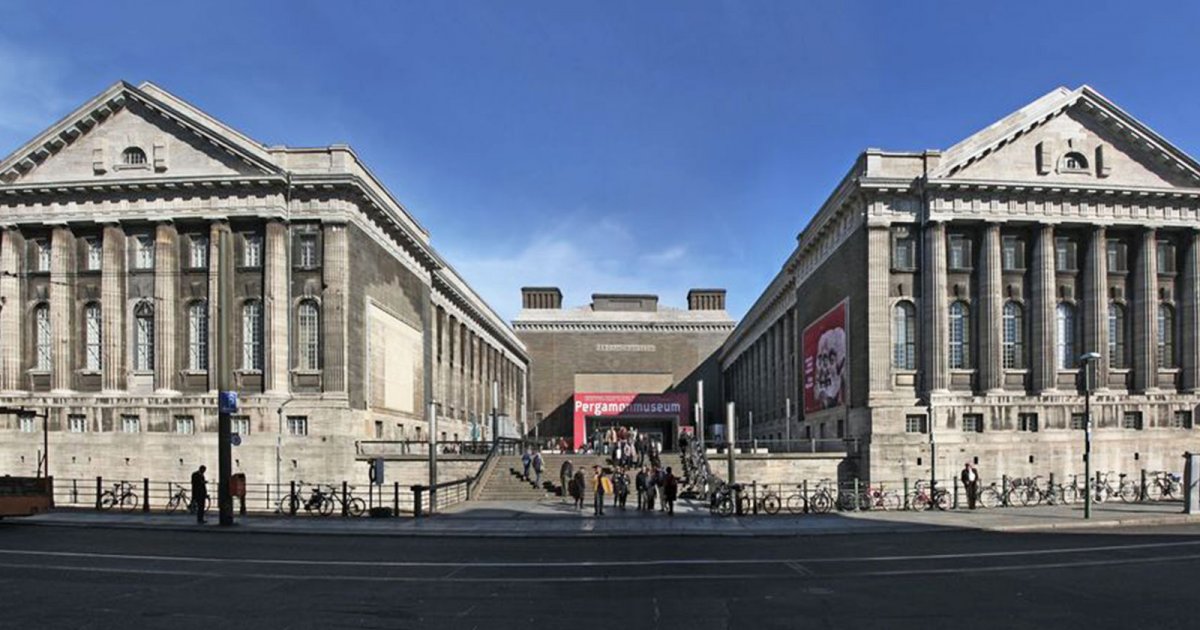MUSEUM ISLAND, Pergamonmuseum
 Language: English / USA
Language: English / USA
The Pergamonmuseum is undoubtedly the most famous of the museums on the island, and boasts the largest number of visitors of any museum in Germany, attracting over a million tourists a year.
It was built on the initiative of Wilhelm von Bode, director at the time of the Bode-Museum, to house the major architectural pieces that arrived in Germany in the early 20th century from the numerous German campaigns in Egypt and the Middle East. The work was entrusted to Alfred von Messel, one of the best-known German architects of the time, who appears to have taken his inspiration for the building from the Pergamon Altar, which the museum was to host and from which it takes its name.
Inaugurated in 1930, the Pergamonmuseum is home to some massive exhibits. In addition to the Pergamon Altar, more than 15 meters long and with a height of over 14 meters, you can admire the Ishtar Gate, 14 meters tall and 30 meters wide, as well as the Mshatta Facade, the remains of a sultan’s palace in Jordan, almost 8 meters tall. The largest of all, however, is the Market Gate of Miletus, measuring an impressive 16 meters in height and 30 meters in width.
The Pergamonmuseum is divided into three important collections. The first features ancient classical art from the Hellenistic and Roman periods, and includes the Pergamon Altar.
In addition to the Mshatta Facade, the Islamic art collection includes the unique Aleppo Room, a private reception room dating to the Ottoman Period and crafted completely in inlaid wood.
The third collection is dedicated to the Middle East, and it is here that you can see the Ishtar Gate, one of the entrances into the legendary city of Babylon. Walking through the Gate is a thrilling experience, allowing the visitor to feel as if they are walking in the footsteps of those travelers or locals who crossed the threshold over 2000 years ago.
An interesting fact: during the Second World War, the museum exhibits were hidden in caves and cellars to protect them from the bombings. At the end of the war, however, many of them were found by the Soviet troops, who took them to Russia. Some were returned to East Germany in 1958, but most of them remain on display in the Pushkin Museum in Moscow and in the Hermitage in St. Petersburg. An agreement for their return has not yet been reached between the German and Russian governments.



